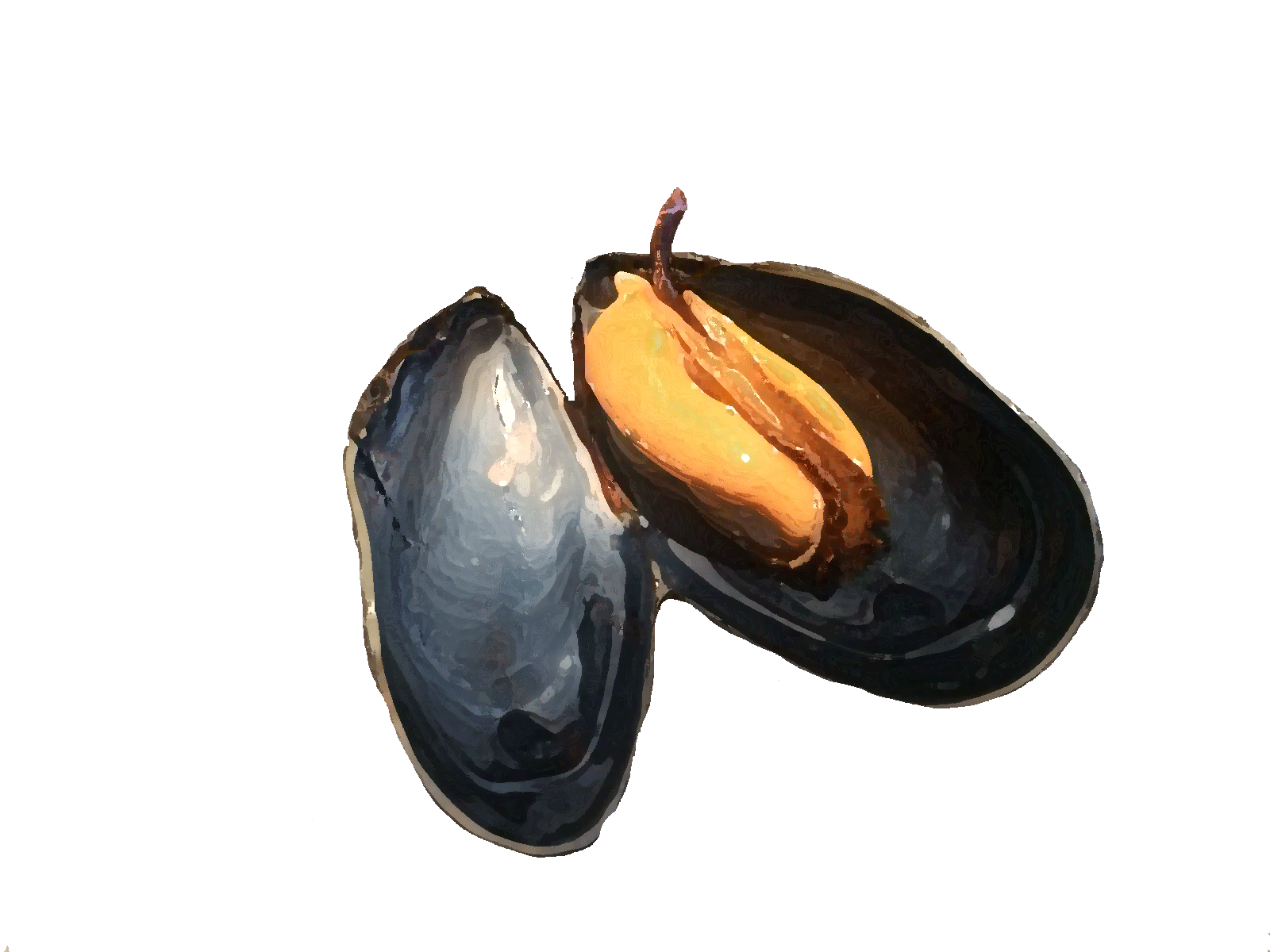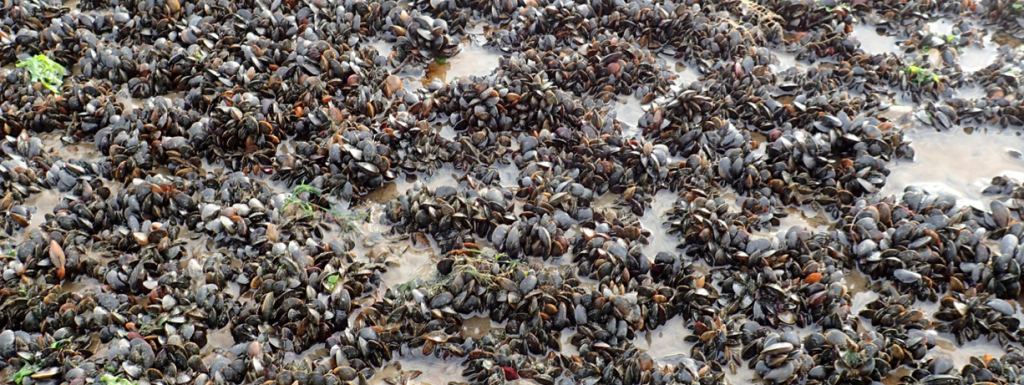Density-dependent processes play an important role in the self-organization of mussels and hence growth and survival rates. Mussels form spatial patterns through an interaction between competition for food and clumping together to reduce loss from predators or wave action. Because of this pattern formation, the food supply and competition pressure within a mussel bank but also within a clump of mussels is not the same everywhere. Thus, the location of a mussel within a natural mussel bed or a commercial bottom plot could affect mussel growth. Flow plays an important role here. When water flows over a mussel bed, the mussels pump so much that after only a few meters, the amount of food, algae, is measurably reduced. Thus, mussels located farther away have less food.
In a natural mussel bed, mussels form patterns on a small (10-50 cm) and large scale (10 m) that help in the survival of the mussel bed. On commercial mussel beds, the mussels are often spread in large circular motions over a mussel plot with the seeding tracks often crossed several times. This creates a seeding pattern with extremely high mussel densities and very low densities. Research has shown that these very high and low densities can have a negative effect on mussel growth and survival. If density is very low (5 kg/m2) then competition for food is high which has a negative effect on growth. Extremely high densities (> 9 kg/m2) can occur on crosses of seedbeds and there high mortality can occur. A higher yield can therefore be obtained if the mussels are distributed as evenly as possible in a density that is not too low and not too high (±3-5 kg/m2).


